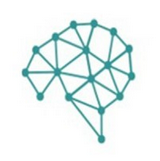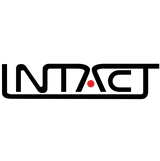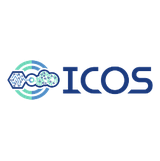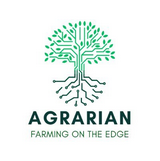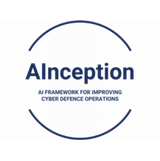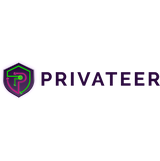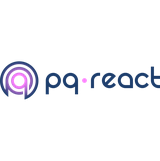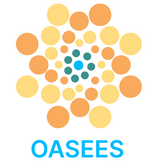CoGNETs
June 1, 2024 – May 31, 2027
Continuums Of Game NETs: swarm intelligence as information processing
CoGNETs aims to revolutionize the Intelligent Infrastructure Management by introducing a scalable and interoperable distributed
(Technical Manager) and supported by a strong Industrial & Academic EU-JAPAN ecosystem led by AVL (leader of Catena-X initiative between EU-JAPAN in data sovereignty for the Automotive & Manufacturing supply-chain). The idea is to leverage the IT intelligence to the point where devices can self-realize their heterogeneity and self-decide how to form dynamic IoT-to-Cloud swarm continuums for responding to common AI tasks and significant items of cognitive computing in automated, secure and energy efficient fashion.
Middleware Framework for autonomous IoT-to-Cloud computing, sustainable during and after the project via FIWARE Foundation
Links: https://www.linkedin.com/company/cognets-project/
Funding organization: EC
Total budget: 5,679,537 €
NCSR budget: 320,000 €
INTACT
September 1, 2024 – August 31, 2027
Integrated software toolbox for secure IoT-to-Cloud computing
INTACT will develop an Integrated Software Toolbox that will offer predictive Cybersecurity sensing, optimization and management services for the distributed IoT-to-Cloud continuum.
The scope is to continuously maximizing the continuum’s infrastructure security and data privacy with minimal effect on its computing capacity, energy consumption, monetary costs, etc. that are necessary for the businesses to run.
To do so, Twinning tools will be replicating the continuum as virtual (isolated) dataspaces, such that Threat Intelligence tools can stress-test the attack-surface of these dataspaces and predict optimal risk mitigation measures accurately and safely (i.e. preemptively protecting and without affecting the real system operation), subject to certain computing, energy, etc. thresholds set by the end-user.
Scalability & Interoperability of services and data will be achieved via the use of open standards & APIs (including Eclipse Connector), while AI Automation will be embedded in all Toolbox processes. Identity & Access Management will be advanced over a zero-trust distributed computing pipeline covering all Hardware-, System-, and Application-level security.
An initial Lab-testbed with matured DevSecOps & ML/Data-Ops stemming from previous EU Actions will lead our developments roadmap to 4x + 1 final TRL7 operational deployments that will be validated over 1st & 2nd Stage Demos covering use cases related to Telcos, Health 4.0, Transportation, Safety-critical Nuclear Infrastructures, and Smart Cities (cross-vertical supply-chain assessments).
The impact will not only safeguard EU position in data security, economy and applications verticals, but lower energy efficiency and CO2 footprint.
Sustainability & Industry acceptance will be achieved via open source ecosystems, standardization involvement, and a dedicated Portal for linking our dataspaces to EU Data Spaces (GAIA-X, IDSA, etc) and our innovations to EU Bodies related to Cybersecurity, AI, IOT and Robotics.
Links: https://intact-horizon.eu/
Funding organization: EC
Total budget: 5,644,566 €
NCSR budget: 317,000 €
Develops an AI-driven, standards-based software toolbox that enables predictive cybersecurity sensing, optimization, and risk mitigation across the distributed IoT-to-Cloud continuum, ensuring secure, scalable, and energy-efficient data operations.
ICOS
September 1, 2022 – August 31, 2025
Towards a functional continuum operating system
The unstoppable proliferation of novel computing and sensing device technologies, and the ever-growing demand for data-intensive applications in the edge and cloud, are driving a paradigm shift in computing around dynamic, intelligent and yet seamless interconnection of IoT, edge and cloud resources, in one single computing system to form a continuum. Many research initiatives have focused on deploying a sort of management plane intended to properly manage the continuum. Simultaneously, several solutions exist aimed at managing edge and cloud systems through not suitably addressing the whole continuum challenges though. The next step is, with no doubt, the design of an extended, open, secure, trustable, adaptable, technology agnostic and much more complete management strategy, covering the full continuum, i.e. IoT-to-edge-to-cloud, with a clear focus on the network connecting the whole stack, leveraging off-the- shell technologies (e.g., AI, data, etc.), but also open to accommodate novel services as technology progress goes on. The ICOS project aims at covering the set of challenges coming up when addressing this continuum paradigm, proposing an approach embedding a well- defined set of functionalities, ending up in the definition of an IoT2cloud Operating System (ICOS). Indeed, the main objective of the project ICOS is to design, develop and validate a meta operating system for a continuum, by addressing the challenges of: i) devices volatility and heterogeneity, continuum infrastructure virtualisation and diverse network connectivity; ii) optimised and scalable service execution and performance, as well as resources consumptions, including power consumption; iii) guaranteed trust, security and privacy, and; iv) reduction of integration costs and effective mitigation of cloud provider lock-in effects, in a data-driven system built upon the principles of openness, adaptability, data sharing and a future edge market scenario for services and data.
NCSRD is leading Task2.1 on technology radar and survey. Also contributes on the following technical activities
- Requirements definition, architectural design, technology radar. This activity will detail the system architecture and survey the current state of the art and beyond technologies related to the project scope (Metaoperating System for Cloud Continuum).
- Design and Implementation of the Meta-Kernel Layer Model. This is an development and implementation activity for the main component of the meta-operating system. NCSRD will contribute in the development and implementation of i) cloud continuum manager and ii) APIs and interfaces. Finally NCSRD will contribute in the delivery of the integrated meta-kernel. The activities will be based on clean slate developments with no NCSRD background being used.
- Development of the Intelligence Layer, Security Layer and Data Management Modules. NCSRD mostly focuses his efforts on Security Layer implementation and its integration APIs.
- Integration toward the ICOS PoC. This activity has two parts i) the integration of the whole ICOS platform/system and ii)the validation of ICOS towards the Proof of Concepts. NCSRD will work on the integration of the system prior to installations on the PoC sites and the system validation.
Links: https://www.icos-project.eu/
Funding organization: EC
NCSR budget: 468,375 €
Developing an open, adaptable, and secure meta-operating system that enables seamless, intelligent management of the IoT-to-Edge-to-Cloud continuum, addressing device heterogeneity, network complexity, energy efficiency, and cloud vendor lock-in through a modular, technology-agnostic architecture.
AGRARIAN
January 1, 2024 – December 31, 2026
SpAce-AIr-Ground Last Mile InfRastructure & Dynamic PrOgrAmmable DistRibuted EnvIronment For Edge FArmiNg
The project aims to accelerate last mile and edge adoption in the rural ecosystem and assess their impact as a whole in a multi-disciplinary manner. The ADSS to be developed will facilitate the adoption process and disrupt the ecosystem via its innovative technologies. To achieve this vision in a heterogeneous environment, it is crucial to involve different stakeholders and follow a multi-disciplinary and inclusive approach.
The AGRARIAN consortium consists of 13 organizations spread over 9 countries in Europe. The project team represents organizations of all sizes, farming associations, livestock, industry, SMEs, research institutes, and universities. The AGRARIAN team exactly achieves this balance in expertise, technology skill sets and societal aspects as well. The consortium comprises experts in non-terrestrial, edge and AI/ML technologies, agricultural stakeholders, and organizations with long experience in hosting open calls, all focused on fostering a framework for rural business engagement, societal inclusion and empowerment.
- NCSRD
- DLR
- LEO
- SIM
- UBO
- ADRE
- APPR
- AVIPE
- PRACTIN
- EPSILON
- MAICH
- TERRA
- SATEL
Links: https://agrarian-project.eu/
Funding organization: EC
NCSR role: Coordinator
Total budget: 4,997,726 €
NCSR budget: 1,559,375 €
Aims to accelerate the adoption of last-mile and edge technologies in rural ecosystems through a multidisciplinary, inclusive approach that empowers stakeholders and fosters sustainable, tech-driven transformation.
COBALT
November 1, 2023 – October 31, 2026
Certification for Cybersecurity in EU ICT using Decentralized Digital Twinning
COBALT proposes the introduction of a Common Certification Model (CCM) for European industries, leveraging existing standards and composing a unified cybersecurity namespace for ICT processes. The proposal will uphold the paradigm of Digital Twinning (DT) via the creation of Digital Threads and extend it in a vertical agnostic approach across different industries, including Quantum computing (involving FHG’s Quantum Computer) and I4.0. The COBALT DT will explore technology disruption mainly focusing on AI and High-Performance Computing (HPC) via the analysis and certification of Quantum Processing Oracles (a Quantum Computer exposure operation that is used as input to another algorithm), and how different enablers of these paradigms can be certified in a vertical agnostic manner.
Funding organization: EC
NCSR role: Coordinator
Total budget: 4,996,405 €
NCSR budget: 504,375 €
A Common Certification Model (CCM) for European industries is introduced, enabling vertical-agnostic cybersecurity assurance through Digital Twinning, AI, and Quantum-HPC integration
AInception
December 1, 2022 – November 30, 2025
AI Framework for Improving Cyber Defence Operations
Most if not all military operations are highly dependent on ICT infrastructures and services. At the same time, adversary state and non-state actors are developing sophisticated offensive cyber capabilities that pose a serious and constant threat. In order to stay ahead in this technological arms race, significantly enhanced capabilities to defend military ICT against cyber threats are needed. Techniques for incident management, detection and response based on Artificial Intelligence (AI) are particularly promising in this respect; sophisticated attacks call for detection and response in an automated fashion requiring defence tools that can learn and adapt to changes in the cyber environment – in other words, tools using AI. This is where the project AInception comes into play. AInception will develop novel AI-based tools and techniques for detection and response: from detecting adversarial behaviour from logs and network traffic; to understanding, contextualising and explaining the detected threat; to generating risk and impact aware response action; all the way to automating the execution and evaluation of the response action on the underlying infrastructure. AI will play a central role for all these steps in the AInception tool pipeline. These tools will be combined into a proof-of-concept end to-end detection and response prototype, evaluated in operational scenarios with end users. Selected tools coming out of the project will be integrated in the cyber defence platform developed by the PANDORA project, as well as existing commercial products and services of the partners. AInception will be implemented by a consortium of eighteen partners, including large industrial partners, midcaps, SMEs, RTOs and defence research institutes from nine European countries. The project is officially supported by seven Ministries of Defence, who will be engaged in the project by participating in its Advisory Board.
Links: https://www.ainception.eu/
Funding organization: EC
NCSR budget: 478,375 €
AI-driven cyber defence tools for automated detection, analysis, and response to advanced cyber threats targeting military ICT systems, ensuring resilient and adaptive protection in high-risk environments
PRIVATEER
January 1, 2023 – December 31, 2025
Privacy first Security Enablers for 6G Networks
Privacy is considered a key pillar in EU research and development activities towards 6G. In the 6G multi-actor pluralistic environment, privacy is pivotal, not only for the end users, but also for all involved stakeholders; and it needs to be taken into account as a key requirement in all technologies of the network stack, including security mechanisms. In other words, the challenge for security enablers in future networks is, on the one hand, to address the significantly widened 6G threat landscape, while on the other hand to preserve the privacy of all actors in the 6G chain. Intrusive security cannot be any more considered acceptable. In this context, the mission of PRIVATEER is to pave the way for 6G “privacy-first security” by studying, designing and developing innovative security enablers for 6G networks, following a privacy-by-design approach.
The PRIVATEER “privacy-first” 6G security framework will consist of a set of enablers built around four pillars: i) decentralised robust security analytics, towards avoiding data centralisation as well as AI mechanisms hardened against adversarial actions resulting in privacy breaches; ii) privacy-aware slicing and security service orchestration, introducing “privacy intent” as an additional factor affecting network service lifecycle management; iii) distributed attestation and identity check, making authentication and integrity verification more privacy-friendly; and iv) searchable encryption mechanisms for privacy-preserving Cyber Threat Intelligence (CTI) sharing. The integrated PRIVATEER framework will be deployed in a campus-wide B5G test network and evaluated against relevant vertical use case scenarios. The security enablers developed in PRIVATEER will complement (and be compatible with) “native” 5G/6G security controls as standardised by 3GPP for basic functionalities (network attachment, authentication, authorisation etc.) to achieve a holistic, privacy-friendly security solution for future networks.
Links: https://www.privateer-project.eu/
Funding organization: EC
NCSR budget: 476,625 €
Privacy-first security framework for 6G networks, embedding privacy-preserving mechanisms across the entire network stack to address the expanded threat landscape without compromising user or stakeholder privacy.
PQ-REACT
September 1, 2023 – August 31, 2026
Post Quantum Cryptography Framework for Energy Aware Contexts
The main objective of PQ-REACT project is to design, develop and validate a framework for a faster and smoother transition from classical to post-quantum cryptography for a wide variety of contexts and usage domains. This framework will include PQC migration paths and cryptographic agility methods and will develop a portfolio of tools (including an actual quantum computer) for validation of post quantum cryptographic systems, that will allow users to switch to post-quantum cryptography, taking under consideration their individualities and various contexts.
Links: http://pqreact.eu/
Funding organization: EC
NCSR role: Coordinator
Total budget: 4,935,860 €
NCSR budget: 1,506,250 €
Flexible and validated framework for cryptographic agility, enabling smooth and secure transitions from classical to post-quantum cryptography across diverse operational environments
OASEES
January 1, 2023 – December 31, 2025
Open Autonomous programmable cloud appS & smart EdgE Sensors
The massive increase in device connectivity and generated data has resulted in the proliferation of intelligent processing services to create insights and exploit data in a multi-modal manner. Currently, the most powerful data processing operates in a centralised manner at the cloud, which provides the ability to scale and allocate resources on demand and efficiently. Centralised processing and cloud hosting, bound and limit their services and applications to operate in a resource restricted manner, relying usually on large single entities to provide, i) Authentication, ii) Data storage, iii) Data processing, iv) Connectivity, v) Vendor-locked environments for development and orchestration. This significantly limits the user from its data governance and even identity management. Similarly, existing solutions for edge device authentication require a centralised entity to trust them and authenticate them, rendering a non-portable identification paradigm. OASEES aims to create an open, decentralised, intelligent, programmable edge framework for Swarm architectures and applications, leveraging the Decentralised Autonomous Organisation (DAO) paradigm and integrating Human-in-the-Loop (HITL) processes for efficient decision making. The OASEES vision is to provide the open tools and secure environments for swarm programming and orchestration for numerous fields, in a completely decentralised manner. An important aspect in this process is identification and identity management, in which OASEES targets the implementation of a portable and privacy preserving ID federation system, for edge devices and services, with full compliance and compatibility to GAIA-X federation and IDSA trust directives and specifications. This situation solidifies the need for an integrated enabler framework tailored to the edge’s extreme data processing demands, using different edge accelerators, i.e. GPU, NPU, SNN and Quantum.
Links: http://oasees-project.eu/
Funding organization: EC
NCSR budget: 835,000 €
Fully decentralized, intelligent edge framework for swarm computing, integrating programmable architectures, portable identity management, and DAO-based orchestration to empower data sovereignty and trust at the edge
MARE
January 1, 2025 – December 31, 2027
Open Autonomous programmable cloud appS & smart EdgE Sensors
As 6G technology advances, it introduces a new set of security challenges—ranging from safeguarding user data and maintaining the integrity of ultra-low latency communications, to defending against increasingly complex cyber threats. Addressing these concerns is essential for building a trustworthy, high-performance, and resilient communications infrastructure.
The MARE project addresses this need by developing a next-generation 6G service delivery platform centered on a novel, programmable security architecture. At the heart of this approach are Dynamic Open Trust (DOTs)—modular, intelligent security components that can be dynamically composed to deliver adaptive, context-aware protection across diverse network environments.
To further strengthen the platform’s resilience, MARE integrates advanced threat anticipation capabilities through pre-assessment frameworks and structured attack modeling, enabling proactive defense strategies and minimizing system vulnerabilities before they are exploited.
Links: https://mare6g.eu/
Funding organization: EC
Total budget: 7,998,984 €
NCSR budget: 389,375 €
Advances secure 6G service provisioning through a modular, programmable security plane built on Dynamic Open Trust (DOTs), designed to proactively counter evolving cyber threats and ensure network resilience
